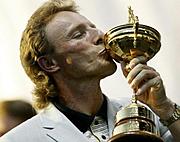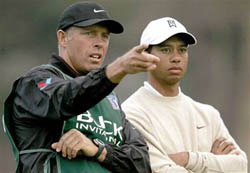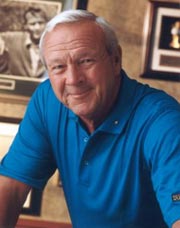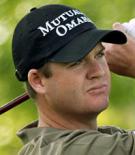 Early in November of 2004, the United States chose Tom Lehman as its captain for the 2006 Ryder Cup. The European team has taken a bit longer to choose its leader for the 2006 campaign. Ryder Cup super-star Colin Montgomerie decided he’s not done trouncing American opponents and withdrew his name from consideration. This left three possible choices: Ian Woosnam, Nick Faldo, and Bernhard Langer. Better make that two. Now it appears Langer has decided he’s going to step aside and allow someone else to fill the position. Although Langer removed himself from the captain’s seat, he still has ambitions of being in Ireland saying, “I have every intention of being a playing member of the 2006 European team.” This comes as bittersweet news to American golf fans considering Langer’s 10 Ryder Cup appearances and 21-15-6 cumulative record.
Early in November of 2004, the United States chose Tom Lehman as its captain for the 2006 Ryder Cup. The European team has taken a bit longer to choose its leader for the 2006 campaign. Ryder Cup super-star Colin Montgomerie decided he’s not done trouncing American opponents and withdrew his name from consideration. This left three possible choices: Ian Woosnam, Nick Faldo, and Bernhard Langer. Better make that two. Now it appears Langer has decided he’s going to step aside and allow someone else to fill the position. Although Langer removed himself from the captain’s seat, he still has ambitions of being in Ireland saying, “I have every intention of being a playing member of the 2006 European team.” This comes as bittersweet news to American golf fans considering Langer’s 10 Ryder Cup appearances and 21-15-6 cumulative record.
Once is Enough for Langer
Victorious in 2004, European Ryder Cup Captain Bernhard Langer has withdrawn his name from captaincy in 2006.

 It all began quite innocently in 1956 with the televising of
It all began quite innocently in 1956 with the televising of  Steve Williams, caddie to Tiger Woods, recently made the
Steve Williams, caddie to Tiger Woods, recently made the  From the Associated Press comes news that Arnold Palmer, age 75, was married yesterday in what is being described as “an intimate ceremony” in Hawaii. Vows were exchanged in a seaside cottage on a course Palmer designed at the
From the Associated Press comes news that Arnold Palmer, age 75, was married yesterday in what is being described as “an intimate ceremony” in Hawaii. Vows were exchanged in a seaside cottage on a course Palmer designed at the  It all began quite suddenly a year ago. After Ernie Els lost to Trevor Immelman at the Deutsche Bank-SAP Open, Els called for the
It all began quite suddenly a year ago. After Ernie Els lost to Trevor Immelman at the Deutsche Bank-SAP Open, Els called for the  During the second day of the
During the second day of the